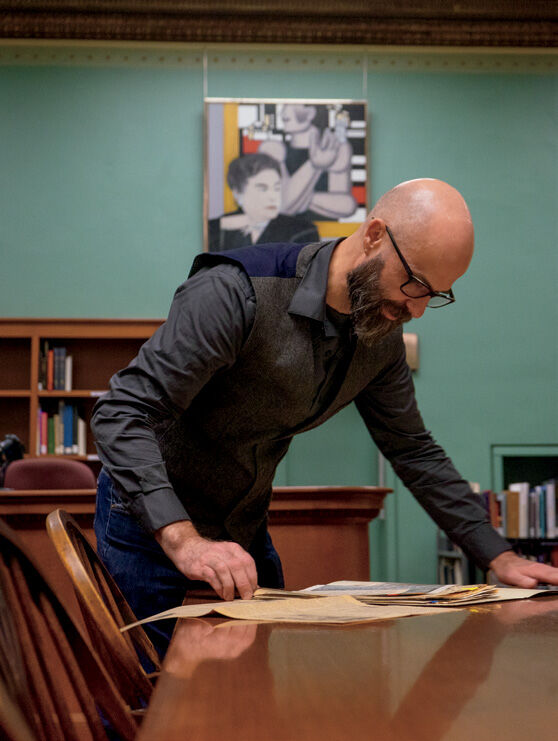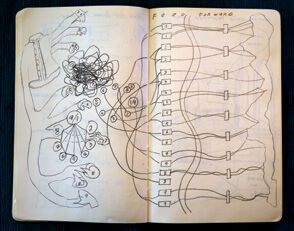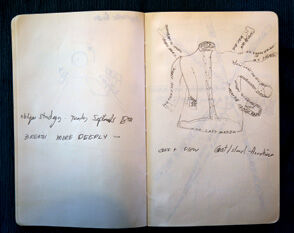
The Process
Nicholas Lowe on His Process
by Bree Witt

Tucked away in a quiet corner of the Art Institute of Chicago’s Ryerson and Burnham Libraries, Nicholas Lowe’s mind is racing, connecting every historical document to its source and every source to contextual details, drawing maps in his head about where the archived material is, where it came from, and where it’s going to go next. Lowe is searching for a story.
Lowe, program director and associate professor in Historic Preservation, is a visual artist and curator. Scratch that; he’s a historian. No, that’s not right; he’s an archivist. Though he seeks to use extensive details to create order in his work, Lowe recoils from categorization. “I’ve got a real allergy to labels,” he says. Lowe is all of the above and an expert facilitator who creates space for materials he works with to tell their stories.


“Every artifact has its own life, and all we have to do is interview the object,” explains Lowe when discussing his curatorial approach. Acknowledging that this idea may sound strange, he clarifies that every item has inherent details—such as a postscript about wild rice on a letter between Marcel Duchamp and Mary Reynolds—serving as evidence to tell a larger story. “What I’m really saying is, I want you to really, really pay attention to what the thing tells you,” he emphasizes.
Lowe takes the observer through their own unique journey by making order out of the finer details of an object. Inspired by Katherine Kuh, an influential Chicago gallerist and curator at the Art Institute of Chicago museum in the 1950s, and art historian Helen Gardner, who served on SAIC faculty from 1920–46, Lowe approaches materials he works with as though they are on a level playing field. “If you really believe in the materiality of art and art objects, then you kind of have to accept that the plastic frog has as much value, as a cultural object, as a Rembrandt,” says Lowe.
Lowe’s process starts with arranging and rearranging the order of artifacts, paying close attention to every detail and building outward, reminiscent of how a forensic scientist might approach their work. This research phase allows him to go deep into context and histories of items he’s working with to form a clear understanding of the material and ideate how he might exhibit the work. From there, Lowe investigates his materials further through display, iterating various ways to put them on view. Different stories will arise by the presentation of objects, so it is critical to explore all options. “Don’t be satisfied when you think you’ve made something that’s great; do it again,” he says. Advice to pay attention to.
